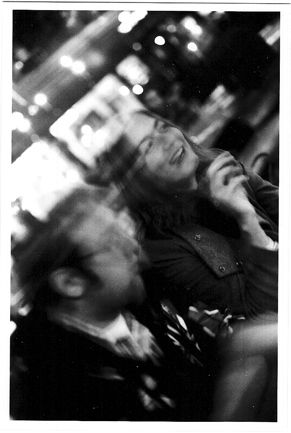Rhetorical appeals in interaction design.

Once you start looking for connections, connections spontaneously pop up to say hello.
For my presentation last week in Boulder at Interaction Eleven, I talked about Donald Norman’s three levels of cognition that designers need to know about in order to create great products: visceral, behavioral, and reflective – found in his great book Emotional Design: Why We Love (Or Hate) Everyday Things.
Visceral: aesthetics, beauty, and appearances. Does it look good?
Behavioral: pleasure, utility and effectiveness of use. Does it work well?
Reflective: rationalization and intellectualization. Can I tell a story about it?
Then standing in front of my design babies last week, I presented Ellen Lupton’s Rhetorical Handbook: An Illustrated Manual for Designers. I give my students sketching exercises based on rhetorical devices which helps them (immensely) push past exhausted clichés. They are often bewildered and confused when initially presented with the concepts of synecdoche and metonymy, but at my insistence, they push on and struggle through, emerging all the better designers for it. But anyway, in this paper, coauthored by Hanno Ehses, Ellen outlines classical rhetoric’s three modes of appeal, presented via the evolution of industrial design in radios:
The rhetorical “modes of appeal” describe the way a speaker’s argument engages its audience: the speaker might accuse, flatter, offend, impress, anger, or amuse. A designer’s “mode of appeal” is expressed through the choice of words, images, format, style, color, type, and materials.
Ethos
Ethical appeal: aims to delightAddresses the moral and aesthetic values of an audience; it invokes trust and respect, asking one to identify with a product or idea. All design, unless it purposefully aims to offend, has an ethical dimension.
The ethical appeal dominated early designs for radios, which used recognizable furniture types to integrate new technology into the traditional home.
Pathos
Emotional appeal: aims to moveThe emotional appeal attempts to provoke a passionate response (sensual, political, spiritual). in the 1930s and 40s the emotional appeal made the machine a symbol for a glamorous future. Many radios from this period imitated shapes from a romanticized urban landscape.
Logos
Rational appeal: aims to informThe rational appeal addresses an audience’s respect for controlled, logical thinking. Beyond its stated content, “information” can have stylistic cues: hard edges, diagrammatic lines, authoritative language, numerical data.
The rational appeal suits the contemporary attitude towards technology which accepts the machine as a routine aspect of daily life. The many dials and displays of today’s radios enhance their “technological” image.
And I realized that, wow. These modes of appeal map almost directly to Norman’s (one could argue that Ethos and Pathos are somewhat interchaneable with Behavioral and Reflective, but here I’ll plant a stake in the ground).
Visceral = Ethos
Behavioral = Logos
Reflective = Pathos
Amazing. Fascinating. That is all.
